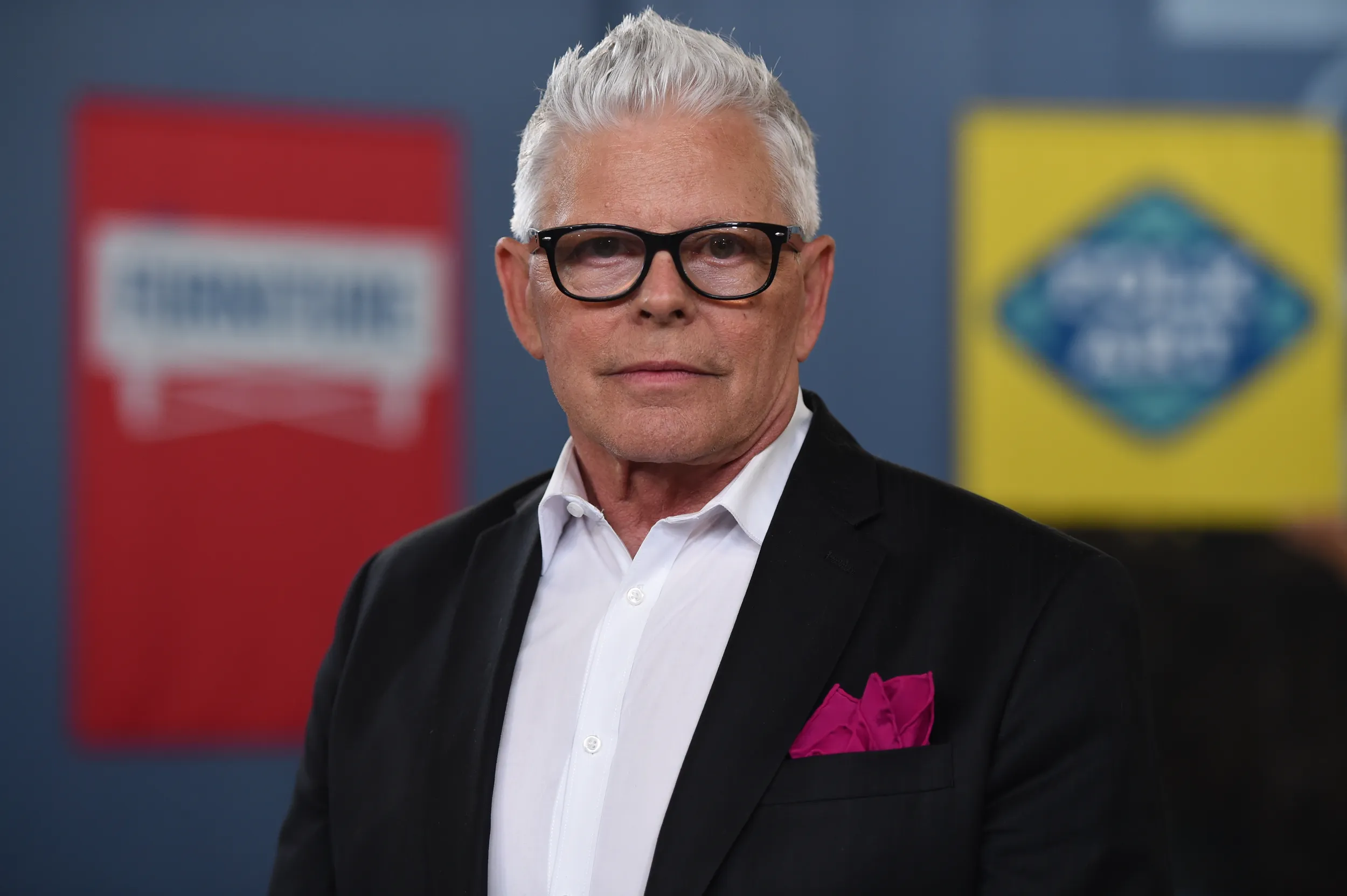Previous Episode
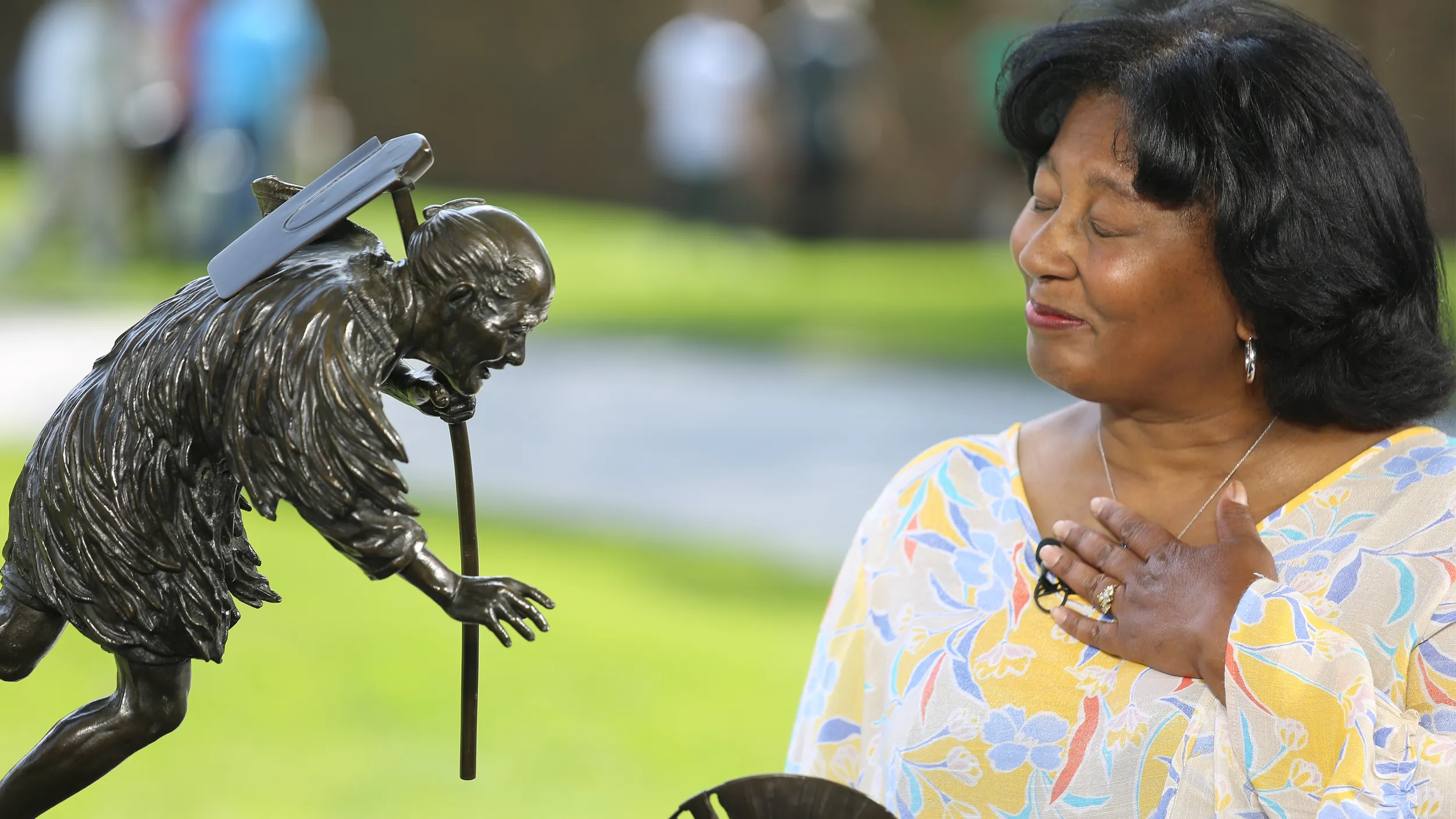
episode
Meadow Brook Hall, Hour 2
Discover Detroit-area items appraised at the historic Dodge-Wilson estate. One is $40,000-
Next Episode

episode
Magnificent Michigan treasures shine at Meadow Brook Hall
HOST: ANTIQUES ROADSHOW is seeing magnificent treasures at Meadow Brook Hall in Michigan.
GUEST: Today, I brought the trolley from Mr. Rogers. I used to babysit his children.
GUEST: Wow-- wow.
HOST: Meadow Brook Hall, a grand Tudor Revival mansion, was built using a fortune made in the early years of the American auto industry. It's a fantastic location for our ANTIQUES ROADSHOW event today, but it's not the only noteworthy building on the grounds. What's so special about these unassuming structures? We'll answer that question later on in the show. But right now, back at Meadow Brook Hall, ROADSHOW is seeing a ton of treasures brought from homes all across Michigan and beyond.
APPRAISER: Now, let's pop this lid right here. And what does that look like? A bidet.
GUEST: A bidet?
APPRAISER: It had a porcelain liner when it was made. It dates from the 1830s
or the 1840s.
GUEST: Well, I enjoy having it in my living room. It sort of makes a conversation
piece.
APPRAISER: There's a tradition in textile-producing countries of covering tables in textiles to show how important the textile is. But when it's signed "MMF," it means it was made while she was still living. After her death, they signed them, "MMF A.D."
VOLUNTEER: Hi, welcome to ANTIQUES ROADSHOW. Does anybody have military
items, weapons? Then please step over...
GUEST: It was a sword.
VOLUNTEER: You have to go over there.
GUEST: I bought them a few years ago from a garage sale. They were with a number of dorm-type posters. And I knew I was buying a piece of history,
and I knew it was an important piece of history. But I really haven't had a
chance to, to really research them. I figured they were from the, probably the early to mid 1960s, based on their content.
APPRAISER: And how much did you pay for them?
GUEST: Well, I paid 25 cents apiece for them, and I think they charged me that because they do have some holes and a little bit of, a little bit of wear.
APPRAISER: Quite frankly, they have been used. They have tape marks in the corners where they were taped to the walls. You'll notice on each, there's a tear, and when they were all rolled together, at some point, they were torn in the same place, and some animals got to them. There were little nibbles taken out.
GUEST: It seems so.
APPRAISER: They look like dorm-room posters.
GUEST: Mm-hmm.
APPRAISER: But more than just dorm-room posters. As you said, they're, they're a piece of history. And more than just a piece of history, they're a piece of recent history. They're pieces of the civil rights movement in America. Now, these three photos were taken by a photographer named Danny Lyon. And Danny's name appears on each one of them in the lower corner. You can see where it says, "Danny Lyon." Danny Lyon is a very prominent and famous photographer who really made his name by elevating social democratic photography to an art form. This was his milieu-- this is where he shone. And he did a lot of work with the Student Nonviolent Coordinating Committee, the SNCC, or "snick," as they were known. And SNCC was part of the civil rights movement that was formed in relation to the sit-ins that began happening in the early 1960s, and within the Civil Rights Movement, they had wanted things to move a little bit faster and a little bit more aggressively. And these posters were advocating the work of SNCC within the Civil Rights Movement. They date to around 1962. One of the interesting ways about dating these is, you'll notice that each one has the address of the SNCC office in Atlanta, Georgia, but there's something prominently missing from those addresses.
GUEST: A ZIP code.
APPRAISER: There's no ZIP code, exactly. ZIP codes began being used in 1963. So these definitely pre-date 1963. And the images are these images from marches. They're images from protests. The one next to you that says, "Now," was taken at the march in Washington, DC, where Martin Luther King gave his "I Have a Dream," speech.
GUEST (quietly): Wow.
APPRAISER: One of these posters to me stands out more than the other ones, and that's the one on the bottom. "Come Let Us Build a New World Together." What to me stands out about it are the people who are involved in the photograph. Do you recognize any of them?
GUEST: No, I don't.
APPRAISER: I only recognize one, to be honest, and that's the figure closest to
you. That's John Lewis, Congressman John Lewis.
GUEST: Sure.
APPRAISER: Who was then a 22-year-old civil rights activist. He's been a congressman now for over 30 years, and this was when he was involved in the movement. So coincidentally, he was caught in this photograph, in this incredibly poignant moment, praying for a new world together, a better world-- and it's great. Two of these three posters have come up at auction before, the John Lewis poster, and the "One Man, One Vote" poster.
GUEST: Okay.
APPRAISER: The "Now" poster has never come up for auction. In my estimation, in their current condition, were they to come up at auction, with all of their civil rights poignancy, with all of their, the prominence of the figures, with the importance of the photographer, I would estimate these three posters between $7,000 and $10,000.
GUEST: Okay.
APPRAISER: And as I understand it, you paid 75 cents.
GUEST: Yes, I did.
APPRAISER: I'm a little better at history than I am at math, but that's a very good return.
GUEST: Uh, yeah.
APPRAISER: The John Lewis poster came up for sale as recently as March 2018, the first and only time it's ever come up for auction, and in perfect condition, it sold for $6,500.
GUEST: Wow. I'm flabbergasted, I really am. I collect posters but not these
kinds of posters. So I guess I did all right.
GUEST: It's a University of Michigan football helmet. Somehow my father got ahold of it when he was at Michigan in the early 1940s. I don't believe he ever wore it, you know, participated in the football. Although, I suppose it could have been intramural or something, but he was never on their team or anything. And it's just been in the family ever since. And he was there before World War II, so it's got to be the first part of the '40s, probably-- maybe late '30s.
APPRAISER: Well, and he acquired it at the university.
GUEST: Yeah.
APPRAISER: Well, that fits right for the time. And of course, Coach Crisler introduced the wing-front leather helmet in maize and blue in 1938 in Ann Arbor-- was the first coach to do so. And there we see the wing-front design, where the name comes from, of course. And it's just a classic helmet. Very popular program, of course, to collect-- with the Michigan program, the football program-- and it's any sort of game-used equipment. Very hard to find, especially the helmets. They're very difficult, and collectors really, really seek, seek out these types of items.
GUEST: Oh, really?
APPRAISER: Any idea of the value?
GUEST: None, absolutely none. It was sitting on my shelf in the basement.
APPRAISER: Mm-hmm, well, it's actually considered in very good to excellent condition, because, you know, of course, it was going to be on the football field
and take some knocks. So overall, really nice to see it in this condition. The value at auction would be $1,500 to $2,500.
GUEST: Wow, very good.
APPRAISER: If it did have a number on it or a name written inside, and we had the provenance that it actually belonged to a player who wore it on the field, you could double or triple that value.
APPRAISER: Like, right here is a '20s fabric. This is a man's shirting from the 19-teens, early '20s. And it's a special thing. It is.
GUEST: Oh, I treasure it.
GUEST: I bought it from a collector in a little bed and breakfast down in Kentucky. He told me it was original, but I was suspicious. But I trusted him. I'm here to verify.
APPRAISER: With all its little restoration, not a lot of value. Probably... I think the head's appealing. Probably around $200, $250.
GUEST: Okay.
APPRAISER: Isn't it scary? Yes. Hmm?
HOST: This farmhouse is the place where John and Horace Dodge designed their first automobile back in 1914. They called the prototype, seen here, "Old Betsy." The Dodge brothers started selling the four-door touring car in November of that year for $785, the amount of a year's salary or more for many American workers.
GUEST: These were my mother's bracelets, and they were made many years ago. She knew David Webb. He designed these specially for her. And what's really interesting is, all the diamonds come from bracelets and jewelry of her mother's. So it's like three generations. The bracelet makes into a necklace, and she wore it quite often. I've worn it for very special occasions.
APPRAISER: Yeah, yeah, I can tell you what I know about David Webb. He was a very prominent jeweler in New York City. He had a shop right on 57th Street. He was actually known for making jewelry for clients with stones, so that's not unusual. But his designs were unique. These were probably made in the '60s. What I love about it is the texture of the gold. Can you see? It's almost like bark.
GUEST: Yeah, uh-huh.
APPRAISER: And the way he's put the diamonds in there in three steps, lower, higher in the middle, and then lower. The diamonds are set in platinum.
GUEST: Oh, wow.
APPRAISER: And it is marked, "Platinum and 18-karat gold." David Webb jewelry right now in the market is trending. People really are collecting it. But one of the problems is, a lot of it is being copied and faked. So a lot of people that buy it in the secondary market are kind of worried.
GUEST: Oh, isn't that too bad?
APPRAISER: But these are correct, and since you've had them all these years, there's no question they came from your mother.
GUEST: Yes.
APPRAISER: And you said she made it into a necklace.
GUEST: Yeah.
APPRAISER: The best way to wear these, personally, if they were mine, would be together. Let me show you. When you put them together, they almost look like a snake. And they are really chic. So during the day, you could wear one on each arm, but in the evening, I would double down on them and make them into a very…
GUEST: Oh, won't that...
APPRAISER: …important-looking…
GUEST: …That would be beautiful.
APPRAISER: bracelet. Just to tell you, we did the diamond weight. You're probably at ten carats for both of these.
GUEST: Wow.
APPRAISER: And I would say, in a retail setting, you are looking at $20,000 to $30,000.
GUEST: Oh, wow!
APPRAISER: So I don't know if that's what you were expecting.
GUEST: I didn't, I had no idea.
APPRAISER: It's a German clock. They made all types of clocks, hundreds of different models. This would have been one of their more affordable models, a very common clock, mass-produced on a huge scale.
GUEST: It belonged to my great-grandparents in England. And it was made for their wedding.
APPRAISER: This is a very distinctive type of pottery. We call it bargeware. And it was made in the county of Leicestershire, in England. Probably $500 would be the right price for it.
GUEST: I took a long lunch one day, and I scanned some of the old antiques shops that I'd be around. Just as I walked in the store, I saw this kind of across the room. I had to go over and pick it up and take a look. And you know, I think I paid about $40 for it. You know, it was exactly what I hoped it would be.
APPRAISER: And you are a potter?
GUEST: I'm a potter, so the shape and the color, you know, it just caught your eye from across the room.
APPRAISER: And you knew what it was when you bought it?
GUEST: I did, a piece of Maija Grotell from her time at Cranbrook.
APPRAISER: Mm-hmm. Well, Maija Grotell was a potter's potter, so I can see why you would be attracted to it. And certainly when I knew we were coming here, this neck of the woods, I was hoping to see a Grotell pot. I don't know that we've done one yet on the ROADSHOW. So I wanted to talk about not just this piece of pottery, but about Maija Grotell as a potter. She came here in '27 from Helsinki, and she came to America, because, especially at that time, the opportunities for women in the arts were not that great in Europe, and she felt she would have a better shot at a job in, in America. So she came to New York City, and she worked at the Henry Street Project, where she taught potting. She worked at Rutgers University, across the river in New Jersey. And she's in New York for a while, and she wants a job at Cranbrook, and they wouldn't hire her initially, because they wanted a man. And when they finally hired her in '38, she wasn't sure she was going to take the job, because she did not want to be at a disadvantage with men taking credit for the work that she did there. And during her tenure, which lasted into the '60s, she taught some of the most important studio potters in America, including Richard DeVore, Toshiko Takaezu, and she was deeply influential. So it's great to see this piece and to be able to talk about Maija Grotell, her work at Cranbrook. And this, the way this pot is marked, the "MG" for Maija Grotell, and then the "C" and the "A," that's for Cranbrook, so we know this was a piece that she made there. Not all the Cranbrook pieces are marked with that "C.A.", conjoined "C.A." cipher, but the majority that I have seen have had the "C.A." mark on them. So a beautiful piece, nicely glazed. In terms of value, not a big surprise here. Because the pot's not decorated-- it's beautifully glazed and a great color, too, for her work-- but this would be at auction for somewhere between $3,000 and
$4,000. It could do a bit more than that, but that's the price range.
GUEST: All right.
APPRAISER: Had the piece been decorated by her with her incised designs...
GUEST: Sure, mm-hmm.
APPRAISER:...the price would go up from there. But for an undecorated piece, it's really quite exquisite.
GUEST: That's fantastic.
APPRAISER: Good return on your investment.
GUEST: Oh, yeah.
HOST: In 1926, this cabin was built for ten-year-old Dan Dodge, the son of John and Mildred. As a child, it was Dan's place to play and tinker. As a teenager, Dan added a room to the cabin, and it became his office and laboratory. Dan's life was tragically cut short. He drowned at the age of 21 while en route to getting medical help from injuries suffered from playing with dynamite.
GUEST: A few years ago, I purchased this book from a local bookseller.
APPRAISER: "The First Men in the Moon."
GUEST: "The First Men in the Moon," and...
APPRAISER: H.G. Wells.
GUEST: At the time, she said, "Wouldn't it be nice if you had one of the astronauts sign it?" And I said, "Yeah, that would be very good." And so I contacted my local congressman. He gave me the addresses for Mr. Armstrong and Mr. Aldrin, and I...
APPRAISER: What year was this?
GUEST: Around 1991.
APPRAISER: Okay.
GUEST: Mr. Armstrong graciously replied and signed the book for me.
APPRAISER: So it was published in 1901, in America first, Indianapolis, and, also, slightly later, a couple of months later, in London. The true first edition is Indianapolis.
GUEST: Oh, okay.
APPRAISER: So that's an interesting bit of trivia. So it's a first edition. So I'm happy when I see that. Then, what you did was interesting. You've given a what we call association to the book, and that's what this is. Now, he probably saw that you invested in a first-edition book to send him. And obviously the title, "First Men in the Moon," would appeal to the first man on the moon.
GUEST: First man on the moon.
APPRAISER: So when he got this, he said, "Okay, this isn't just some autograph collector. This guy cares something." And the book must have touched him. So he took his time to do this. And he didn't inscribe a lot. His autograph is the hardest one. Buzz Aldrin signed a lot, so...
GUEST: Yeah, he still does.
APPRAISER: Yeah, he still does. So it says, "Best wishes," to you. He personalized it, which further corroborates the fact that this isn't some kind of a signature done at a signature fair. This is done in the book. He took the care and sent it back to you. Now, interestingly, when I went to look it up, there was a book written in 1970, '71, by the astronauts, by Neil Armstrong, and interestingly, it was called
"The First on the Moon."
GUEST: Okay.
APPRAISER: This is "The First Men in the Moon."
GUEST: And it's plural, yeah.
APPRAISER: Yeah, so he must have had this, you know, he knew the affinity and the obvious connection. He was the first man on the moon. That book comes up, and occasionally it's signed-- but even that's rare-- by Neil Armstrong. But to get H.G. Wells, you're tying in what was science fiction to what is a reality, is kind of a nice thing. And...
GUEST: It was beautiful.
APPRAISER: It's a special thing. And now he's no longer around to sign things. Can ask how much you paid for this originally?
GUEST: It was right around, I think, $50.
APPRAISER: $50.
GUEST: Yeah.
APPRAISER: That's, that's a great price for the book. Because the book itself is worth some $300, $400. One other copy of this book came up-- it was a London edition, so it was the first English edition-- came up, and it was signed by Buzz Aldrin only. Okay?
GUEST: Okay.
APPRAISER: Now, that sold in 2008 for... Approximately, it was $3,000.
GUEST: Okay.
APPRAISER So I'm thinking this is Neil Armstrong. This is the first man on the moon.
GUEST: That's right.
APPRAISER: This is the book you want. So I would definitely say that we're looking at an auction estimate of $3,000 to $4,000.
GUEST: Nice.
APPRAISER: And it's the kind of thing that could go higher. You never know. But I would insure it, maybe at the level of $4,000, $5,000.
GUEST: That stays in the family.
APPRAISER: Great.
GUEST: That kind of piece of history.
APPRAISER: You brought a 1929 baseball from a game between the Detroit Tigers and New York Yankees. How did you get this ball?
GUEST: I got it from my stepdad. He and my mom married in 1971, and he showed me the baseball, and he kept it. And when he got sick and went into a nursing home, my mother gave it to me. So I've had it for the last 17, 18 years.
APPRAISER: What's interesting is, the ball is scored. So... more interesting is that it's signed by three of the six members of the Yankees' Murderers' Row from the late 1920s. We see Babe Ruth on the sweet spot, where he should be. You got Lou Gehrig on one of the side panels. And flanking him is Tony Lazzeri.
GUEST: Yeah, right.
APPRAISER: So you got three Hall of Famers on one ball.
GUEST: Right, right.
APPRAISER: What's interesting, and the scoring shows, that the Yankees lost that game nine to eight, okay? Now, it wasn't one of their many championship years
in their long run. But, again, you've got three Hall of Famers signing the ball, all in black ink. They're not as potent as they were back then, but they're still pretty strong. They created about a five to six each, which is excellent, given the condition of the ball, given the age. How was the ball obtained? Because it was a game ball.
GUEST: After the game, my stepdad-- he was a child, he was eight years old, his dad had taken him to the game. And they went down to the dugout, and my stepdad gave it to Babe Ruth to sign, and Babe Ruth gave it to Lou Gehrig, and presumably gave it to Tony Lazzeri to sign.
APPRAISER: Perfect.
GUEST: Yeah. How about that for a story? Yeah.
APPRAISER: That's great.
GUEST: Yeah.
APPRAISER: Have you had any idea what the ball is worth?
GUEST: I've seen some Babe Ruth signatures selling for as little as $800. I've seen them selling for up to $20,000. I have no idea what differentiates them, other than the quality of the ball itself.
APPRAISER: Okay. Well, you have, with Babe Ruth, Lazzeri, and Gehrig.
GUEST: Right.
APPRAISER: So it's not just a Ruth ball, and the story is great. At auction, we estimate this ball could sell for $25,000. You could insure it for $35,000.
GUEST: Wow, that's... That's, that's even more than I had thought. I've been thinking this ball was really worth $1,000.
APPRAISER: A little more than that.
GUEST: A little more than that, wow.
APPRAISER: I can count on one hand how many times... See the testers on them?
GUEST: Yeah, we've seen a lot of them with...
APPRAISER: Right, and they're usually, yeah, they're broken off.
APPRAISER: So inside the watch is, then, a picture of your, I guess, husband's grandfather.
GUEST 1: Right, or great.
APPRAISER: That nobody knew was there.
GUEST: Yeah.
APPRAISER: What a cool picture, with the helmet on.
GUEST 1: It's very clear, too. You pull this up to your eye. Do you see the detail?
GUEST 2: Yeah.
GUEST 1: Isn't that cool?
APPRAISER: That would probably be your great-grandfather.
GUEST 1: Well, no, it's my second husband.
APPRAISER: No? Oh, okay.
GUEST 2: My step-great-grandfather.
GUEST 1: Exactly.
APPRAISER: He's somebody's great-grandfather. He probably hasn't seen the light of day in 40 years, 50 years—maybe more.
(people talking in background)
GUEST: This was my grandmother's. Prior to her passing away, I always fell in love with it. And I had asked her what she was planning on doing with that. And she said, "Well, if you want it, it's yours."
APPRAISER: So you remember seeing it as a kid and visiting her?
GUEST: Yes, she was an animal lover, and had quite a number of pieces that were related to birds and dogs and things like that.
APPRAISER: Any idea where she got it?
GUEST: I have no idea. I'm sure that my grandfather, who passed away several years earlier than her, had gotten it for her. But where he acquired it, I have
no idea.
APPRAISER: Well, it's a wonderful piece. It's French, actually. It's by an artist named Maximilien Fiot. And it's very clearly signed right here in the front. He was an interesting artist. He was born in the 1880s and lived until the 1950s. And in France, there was this tradition called animalier artists, who were sculptors who specialized in depicting animals. The leading artist was Antoine-Louis Barye. And he started this whole interest in a very romantic idea of animals in the wild, nature, a lot of the animals eating each other, attacking. So that was the tradition. And this artist, Fiot, is interesting, because he's sort of the third generation. So his, his teacher studied with somebody who was the same period as Barye. So there's this interesting continuation.
GUEST: Okay.
APPRAISER: This piece was probably done in the 19-teens or the 1920s. It's an example of that continuation of the animalier tradition well into the 20th century. It was cast by probably the most prominent foundry in Paris at the time, which is Susse Frères. And they're interesting, because they also started in the early part of the 19th century, in the 1830s. So they cast all that first generation of animalier sculptors. So we have this wonderful combination of an artist working in the animalier tradition, and a foundry that's continuing. The piece is beautifully modeled. I mean, he was a highly skilled artist. And I think what's wonderful about this, is the interaction between the horse and this little doggy. I mean, I think it's just so charming and really wonderful. And I think you get an idea of the personality of these two figures interacting.
GUEST: It's mesmerizing.
APPRAISER: In terms of the valuation on this, I mean, this is large for his work. Usually, we just see sort of single figures. A retail value on this would probably be in the $7,000 to $8,000 range.
GUEST: Very nice, very nice.
GUEST: Well, today I brought the sign trolley from Mr. Rogers.
APPRAISER: Really?
GUEST: And, also, a Christmas card that I received, personal.
APPRAISER: Oh, so you knew him, then?
GUEST: Yes, I did, for years. I used to babysit his two children, his two sons.
APPRAISER: Really?
GUEST: Yeah. When I would babysit for them, he would come pick me up. He was my chauffeur. (laughing)
APPRAISER: Now, that's Mr. Rogers.
GUEST: Right. He invited me and my sisters to his family home.
APPRAISER: Oh, wow.
GUEST: With a swimming pool.
APPRAISER: All right.
GUEST: So we would be in the pool, and it was just a wonderful time, as a child. Mr. Rogers also would give my brother, my oldest brother, his sweaters and some white shirts. So when he went to school, he would be real pristine.
APPRAISER: Awesome.
GUEST: And everyone didn't believe that he had gotten the shirts and sweaters from Mr. Rogers.
APPRAISER: That's awesome. So you brought this Christmas card in here.
GUEST: Yes.
APPRAISER: Let's take a look at that. Would you read what it says there?
GUEST: Sure, it says, "Love to you and your family. Joanne and Fred."
APPRAISER: Aw. And then the neighborhood trolley here, I mean, that's an iconic piece for Mr. Rogers.
GUEST: Yes, this was a graduation gift for my son, high school graduation gift.
APPRAISER: Oh, nice.
GUEST: And here he put on there, "Congratulations and kindest regards, Joanne and Fred Rogers."
APPRAISER: Ah, what a good guy. The Christmas card and the trolley, I would put a value on those of $500 to $700 at auction.
GUEST: That sounds great.
HOST: If you thought Dan Dodge's childhood cabin was special, check out the amazing Knole Cottage, a birthday present to Frances Dodge when she turned 12. The three-quarter-scale playhouse was built to teach Frances practical lessons about running a household.
GUEST: My mother-in-law got that from a employer of hers several years ago and gave it to my husband and I. She purchased it in Mexico for about $4,000. And we call it "The Eggheads" just because of obviously, obvious reasons. But we know nothing about it.
APPRAISER: But we know they bought it in Mexico.
GUEST: They did.
APPRAISER: In the '60s.
GUEST: Correct.
APPRAISER: It's not $4,000.
GUEST: Okay.
APPRAISER: It's actually 4,000 pesos.
GUEST: Okay.
APPRAISER: Which is about $400 in the mid-'60s.
GUEST: Okay.
APPRAISER: This painting is by an artist named Bridget Tichenor. It's oil on panel. You can see it's monogrammed there, lower right. She lived, I think, 13 lifetimes in her lifetime.
GUEST: Right.
APPRAISER: And I am going to drop a bunch of names real fast.
GUEST: Okay.
APPRAISER: She was born in 1917, and she died in 1990. And for the first part of her life, she was very much a child of Europe. She studied in many places, especially in London and Paris. She's in Paris, and she's a model for Coco Chanel.
GUEST: Isn't that great?
APPRAISER: Through her mother. Her father was a friend-- again, more name-dropping here-- of the Surrealist photographer Man Ray, who was only the first of many photographers to photograph Bridget Tichenor.
GUEST: Oh.
APPRAISER: By all accounts, she was a beautiful woman. Cecil Beaton also photographed her. Irving Penn also photographed her.
GUEST: Okay.
APPRAISER: I'm told there's even sort of a niche among photography collectors...
GUEST: Oh, is that right?
APPRAISER: ...who purchase photographs of Tichenor by these various famous photographers.
GUEST: Boy.
APPRAISER: So she's in Paris, and the war is coming. She's also bouncing back and forth to England. And even though it's the 1930s, her mother arranges a marriage, and that gets her to New York in 1939. While she's there, she ends up at the Art Students League. She studies with a very famous American painter named Reginald Marsh.
GUEST: Okay.
APPRAISER: But she's also there with another famous American painter, a gentleman named Paul Cadmus, who I think very much influenced her technique. If you look at this panel, it's incredibly smooth and very layered. And it has sort of a jewel-like surface. And that's from a technique inspired by 16th-century painters that Cadmus was particularly fascinated by. And so it's layers and layers, very thin layers and glazes of oil on this work. So the work istitled on the reverse, "¿Sera Cierto?", which loosely translates to "Will it be True?" This painting is dated between 1964 and 1965.
GUEST: Okay.
APPRAISER: At auction right now, I think conservatively, we'd be looking at an estimate of $25,000 to $35,000.
GUEST: Is that right? Oh, my gosh-- I cannot believe that.
APPRAISER: So you've got the teapot, cream jug, and the open sugar basket.
GUEST: Yes.
APPRAISER: Probably put $800 to $1,200 on it.
GUEST: Oh, really?
APPRAISER: Yeah.
GUEST: Okay, great, great.
GUEST: I was afraid it was used for, for practical purposes on the ship.
APPRAISER: Sure. Under your bed with a cover on it, perhaps?
GUEST: Maybe.
APPRAISER: It's possible.
GUEST: The steerage would have been pretty tight at that time.
APPRAISER: Hopefully they would have marked those buckets differently.
APPRAISER: And what you can tell me about it?
GUEST: Well, this was from my mom's collection. She had probably 30 to 40 dolls. She made probably 20, and she collected the other dolls. This was probably her favorite. She talked about it all the time. She said that it was an old one. She thought it was from the 1800s. Plain and simple, she fell in love with it, and anything that she fell in love with, my dad bought.
APPRAISER: Oh, well, that's a good arrangement.
GUEST: So yes. Yeah.
APPRAISER: What you have here is a French doll. It was made by a company called
Jumeau around 1880 to 1890. They were a very prolific doll company, and they made many different kinds of dolls. This one that you have is really very classic. It has everything a Jumeau should have-- very large, expressive eyes...
GUEST: Yes.
APPRAISER: Very heavy eyebrows. And when you see those, those two features, you can always think, "Jumeau." They're not the original clothes, and they're in pretty poor condition. The wig is old, but not her original wig. Her original wig would have been probably blond and would have been mohair, from a goat.
GUEST: Okay.
APPRAISER: This doll would retail from $3,000 to $3,500.
GUEST: Wow!
APPRAISER: So is there anything else you'd like to know about it?
GUEST: You've done well. (laughing)
APPRAISER: I just, again, want to thank you for bringing it in.
GUEST: Thank you, I appreciate it.
GUEST: And the fisherman came from my great-grandfather's house. He bought the home from a man that owned a fleet of fishing boats. And it was carved for him.
GUEST: This fisherman was found in a home that my great-grandfather purchased, and the owner of the home previous to him was a captain of a fishing fleet. And it came from Alpena, Michigan. After my great-grandfather owned it, it came down to my mother. And as a child, he lived in our basement, and with those terrifying red eyes in the black corner next to the coal bin, we were afraid to go to the basement.
APPRAISER: What we have here is a true late-19th-century trade sign.
GUEST: Trade sign.
APPRAISER: It is a sign that is beckoning a profession, a fisherman, where one would go in and buy fishing supplies for the profession.
GUEST: Oh.
APPRAISER: So the fact that it was owned by a professional fish boat captain makes a lot of sense. And a piece like this is carved wood, and the wood is white pine. And it was a wood that was very, very favored by the trade shops because it was soft, it was easy to carve, and it took paint very nicely. And this would have been carved out of a two-foot log. And what is wonderful about the piece is, it's virtually untouched and it's wearing its historic surface. And we have a very important thing going on here, and that is a nameplate. So it's a beautiful 19th-century nameplate that was put on when the piece was made, that says "T.," which is for Theodore, and "Crongeyer," a street address in Detroit, Michigan.
And Crongeyer did other work. We know his shop. He did church work. He did tobacco store trade figures. He did design work. So this figure would have been outside a shop, possibly up high, over the door of the shop, so that people, when walking down the street in either direction...
GUEST: Could see it.
APPRAISER: Could see what is going on inside that shop. Don't forget, it's 1875. People coming to America, many of them can't read, can't speak English.
GUEST: Okay.
APPRAISER: So this becomes a sign language.
GUEST: How wonderful.
APPRAISER: So it's wearing its historic surface. When we turn it around and we take a look, we see etched into the side of the piece the word "fisherman." That was done at a later date. And when we go around to the back, we see a wonderful surface, and I suspect that this was subjected possibly to heat.
GUEST: Oh.
APPRAISER: And that's how you created the surface over here. I think today, it's a desirable piece for the folk art collectors that collect trade signs. But really, these are so rare, because the number of shops that sold fishing supplies were quite few--the number of tobacco shops were, were plentiful.
GUEST: Quite a bit more.
APPRAISER: So we're going to put a retail valuation today of $3,000 to $5,000.
GUEST: I'm amazed.
APPRAISER: Yeah, I think...
GUEST: Wow.
APPRAISER: It's being a little conservative, too. I think it's a very desirable form by a known maker, who's quite rare, actually. It's a wonderful piece.
GUEST: Wow, thank you, Mr. Katz. I'm so surprised. Thank you for telling us it's a
sign. Who would have guessed? Well, you knew. (laughing)
GUEST 1: This one is from Eleanor Colburn.
GUEST 2: This is John Garth.
GUEST 1: John Garth, "The Last Hand."
GUEST 2: And this is... oh, boy. Frederick... oh, boy.
GUEST 1: (laughs)
GUEST 2: Oh, Colbert.
GUEST 1: My grandfather loved art.
APPRAISER: It says, "Helicopter with noise." (toy grinds softly) Not too much noise.
APPRAISER: It's not the work of a very accomplished artist. It is a very decorative picture. The frame's very decorative. The package was probably put together to be sold as a decorative item, as opposed to a fine art item.
GUEST: Okay.
VOLUNTEER: Cheese.
GUEST: My mom used to have dinner with the Hoffas. And one time, when my mom was over there having dinner, Jimmy offered her a signed copy of the book. And she, she liked Jimmy Hoffa, and said, "Absolutely, I'd love to have a copy of it." And that's what I brought in to the ROADSHOW today.
APPRAISER: Well, let me show you first the title. It's "The Trials of Jimmy Hoffa." And when he says, "the trials," he definitely means the trials.
GUEST: Right.
APPRAISER: Because Jimmy Hoffa, obviously, was the union leader of the Teamsters, built it up to where it was one of the most powerful unions in the country.
GUEST: Right.
APPRAISER: And also, he had a lot of connections with mobs, gangsters, and so on. And then he ends up... The Kennedys, in particular, went after him.
GUEST: Right.
APPRAISER: And he went to trial a few times, was found guilty, and then was sentenced to jail. Eventually, he was pardoned by Nixon. Now, in addition, he signed it.
GUEST: Right.
APPRAISER: And this is the signature, "Good luck, James H. Hoffa." Everybody is still wondering where Jimmy Hoffa is.
GUEST: Right.
APPRAISER: What actually happened. And as time has gone on, of course, anybody who might have been related-- if, which, it seems probable that he was murdered--
all of those people are dying. So who knows if we'll ever find out?
GUEST: Right. I did take it to a book appraiser back in '97, and he gave me appraisal of $300 on it at that time.
APPRAISER: When collectors are looking at books like this, they really want not just the cloth book, but they... and the signature, but they also want the paper dust jacket.
GUEST: Okay.
APPRAISER: So 20 years ago, you said it was $300. I would say now it's probably Still that $300 to $500 in a retail setting. If something gets solved, if something happens, if there's a great news story about it, the price might go way up.
GUEST: Right, right.
HOST: Almost 400,000 face bricks were used to build Meadow Brook Hall's exterior walls. The hall has 39 uniquely designed chimneys. More than 1,000 custom-made bricks were used to restore the stacks in 2012.
GUEST: These were my husband's, he passed away in July, and he was 91. And I think they were collected in '40, '41-- I'm not sure.
APPRAISER: I'm very sorry for your loss, for your husband, but he left you an amazing collection of cards right here. So these are the 1940 Superman trading cards, released by Gum, Inc., which later ended up turning into the Bowman Company, which went on to produce tons of baseball cards. There were 72 cards in the set when it was fully released. You have 56 of the cards here. When it comes to collecting these cards, collectors look for them individually, because they're so rare. These cards were released in 1940, so especially with paper drives during World War II, the odds of them surviving are really, really tough. Out of the 56 cards that you have here, you have the number one card, which is the most important out of all. Now, when it comes to grading a card's condition, there are a lot of factors that
we look at. We look at the color of it. We look at the creasing of it. We look to see if it's even off-center. When we look at the Superman one card here, it is intact, and it presents very, very well. But when you dissect the condition of it, you'd see that it's rather poor. We have this crease coming along the lower third corner right here. And, actually, when you get to the lower half of this crease, you see what we call a color break. So that white coming through, that's the actual paper material. There's no color-- it's gone. There's a lot of yellowing and tanning to the paper. At one time, when this would have been released, it would have been a bright white. And now the other thing that we talk about is off-center. Now, when a card comes out of a print, there's no way, even if this card, when it was printed in 1940, it wouldn't be a ten out of ten, because of the margin right here. So you can see how this margin is definitely and very obviously a lot thinner than the margin up here.
GUEST: Mm-hmm.
APPRAISER: And that's just because of the process when it was cut off the sheet in the factory. When we grade cards, we do a numeral scale. So instead of just saying, "Good," "Very good," it's a little more precise. It's at a scale of one through ten, with half-point intervals. This card, I would say, off the cuff, looking at it in a grade, it would be about a 2.0 to a 2.5 condition, which, it's not the greatest condition, but to have a card from 1940 in that shape, to even survive to this day, is incredible. So to have that card in this condition alone is worth $200 to $300. If it were a perfect-condition card, it could easily reach, you know, $20,000 at auction in perfect condition. Now, let's talk about the remaining 55 of them. You have some great action scenes of Superman here. For a Superman collector today, this is the birth of what has grown to be this monster of an entertainment property. For the entire collection in today's world at auction, including the number one card,
you'd be looking at $2,500 to $3,500...
GUEST: (laughing) You're kidding.
APPRAISER: No! It's Superman! Come on, he's awesome.
GUEST: I didn't even know he had them till we started cleaning out.
APPRAISER: No way!
GUEST: Yeah.
APPRAISER: Wow!
GUEST: I had no idea.
HOST: John Dodge's extensive pre-Prohibition liquor collection can be found in this vault. John's favorite whiskey? Old Saratoga, manufactured by Rosskam, Gerstley & Company out of Philadelphia. During Prohibition, about 75% of alcohol was trafficked via the Detroit River. Though it was illegal to buy and sell alcohol, it was not illegal to drink it.
(people talking in background)
GUEST: This is an advertisement for Kleenex tissue. I think it's something that they used to use in drug stores to advertise for, to get people to buy Kleenex tissue. I'm going by the advertisement, the tape that goes around that describes and everything about Kleenex tissue.
APPRAISER: Well, I mean, as an advertisement, it's kind of dull. I mean, there's no real light. So let's turn it on and see what it looks like once it starts moving. Now, where did you get this wonderful sign?
GUEST: It was left in a house that I purchased.
APPRAISER: Mm-hmm, and what did you think? You just went down and found it
in the basement or...?
GUEST: Basically-- that's exactly what it was, okay?
APPRAISER: Now, do you know who's on the front of it?
GUEST: I was told that the little girl's name is Lulu. I'm not sure what the little boy's name is. I think somebody told me that his name was Ivan. But I'm not sure about that.
APPRAISER: Well, you're pretty close. Little Lulu Moppet and her neighbor Alvin Jones. And Little Lulu was a comic book character that was created in 1935 by Marjorie Henderson Buell. She appeared primarily in "The Saturday Evening Post" for a number of years, and then in 1948, she kind of branched out, got her own comic series and things like that. In the late '40s, early '50s, she became the first mascot for Kleenex tissues. And there was a huge advertising campaign. There were little comics with her and the other characters from the comic book in "The Saturday Evening Post." And there was even a huge animated sign in Times Square
with Little Lulu. This piece is from 1951. You've got Marjorie's signature on the front. It says, "Marge." Marjorie Henderson Buell was the original artist and creator of Little Lulu.
GUEST: Okay.
APPRAISER: But around, I believe it was right around 1947 where she stopped drawing them entirely. And then there was a whole stream of artists who came after her who would draw Little Lulu in the style of Marjorie, and sign it "Marge." It's a wonderful sign. The thing I enjoy the most about it is, it covers a lot of ground. Not only is it comic-book advertising art, it's also Kleenex advertising, it's also drugstore art. And it's animated, and it lights up. So it has a lot of interest in
it. The cabinet is in fantastic shape. Usually when you find something like this sitting in the basement for a number of years, it's got water damage or cracks. There is none of that here. And the ribbon across the front isn't torn at all. It's got a little bit of a tension issue, which is why you have that little wobble as it goes. But a lot of those times, these are sun-faded or torn or nonexistent. So the fact that this works completely, with the fluorescent bulb, is astonishing. It's a fairly desirable piece. I talked with a couple of my colleagues, and they were all very excited about this, too. It's just a tremendously fun piece. And we would give an auction estimate for this piece at $1,000 to $2,000.
GUEST: Is that right?
APPRAISER: Yes, sir.
GUEST: Okay, well, that's, that's great.
APPRAISER: These were very popular in the 1960s and '70s, and they were meant to look like an antique. So you happen to have something that's a reproduction that's gone up in value.
GUEST: Oh, good, yeah!
APPRAISER: So that's pretty good. I would say for this lamp today, it would be about $125.
GUEST: Oh!
APPRAISER: The decoration is good, it's not great. It's, it's a little bit rough. It's better than anything I would do, But it's not that... if I was a professional, I would hope to do a little bit better than that. It's lovely and decorative. There's just not a lot of demand for china painting at this time.
APPRAISER: You know, what we try to do is, we take the forensics and things and we match them with the age and time.
GUEST: Right.
APPRAISER: And we try and look at this, and I don't think there's anything consistently to say this is 18th century.
GUEST: Gotcha.
GUEST:: It's my great-grandfather... was a miner in Houghton, Michigan, in the Upper Peninsula.
APPRAISER: He might have been mining coal...
GUEST: Uh-huh.
APPRAISER: But he found some gold.
GUEST: Oh.
APPRAISER: Right? Because these are gold nuggets in here.
GUEST: Okay.
APPRAISER: Jewelry is made to be worn.
GUEST: I never thought of it like that.
GUEST: I have brought today a bracelet that was my grandmother's. I was first-born granddaughter, grandchild, and my grandfather always bought the best for his bride. And this was something that she cherished and she wore all the time. I know that it came from the Cartier store, probably in Birmingham, Michigan, somewhere,
because they lived there for a number of years. When they passed, this was handed down to me, and I cherish it. I only wear it occasionally, to weddings. But it's one of my favorites, and it was one of hers, as well.
APPRAISER: Do you know when she got it?
GUEST: I do not know exactly. We don't really know if it was a wedding anniversary
or a birthday, but he always cherished her with fine items.
APPRAISER: And so, approximately when did he buy it at Cartier?
GUEST: It could have been 50 years ago, maybe a little bit more. It's hard to say.
APPRAISER: Sure, okay.
GUEST: I don't know the whole story.
APPRAISER: Well, and you said you wore it. So this is a great design to
wear, it's so easy.
GUEST: It's so easy, it's so classic, it's a statement piece. I don't have to worry about anything else. And I think of her when I wear it.
APPRAISER: Yeah, well, he had good taste, for sure. I mean, Cartier is a great, iconic store. And you brought it up to the table in the original Cartier box.
GUEST: Absolutely, absolutely. That was one of the greatest things about it. When my yaya was getting dressed, she would tell me to get the special box, and I knew, of course, that it was the red Cartier box.
APPRAISER: The iconic Cartier.
GUEST: Yes, yeah.
APPRAISER: I did some research on it, and it seems like they're not producing this style anymore.
GUEST: Okay.
APPRAISER: And, indeed, I do think it's probably about 50 years old.
GUEST: Uh-huh.
APPRAISER: Basically, the great part about this is that it's tricolor gold.
GUEST: Mm-hmm.
APPRAISER: We have the rose gold on the top, and then it's white gold in the middle, and then yellow gold on the bottom. It's stamped "Cartier" and "750"...
And "750" is for 18-karat gold.
GUEST: Okay.
APPRAISER: The two Cs on either side...
GUEST: Yes.
APPRAISER: is the symbol for Cartier.
GUEST: Right.
APPRAISER: And so that's, like, the double-C motif. Sometimes it comes in plain gold. Sometimes they're embellished with tiny diamonds.
GUEST: Oh.
APPRAISER: And you can wear it not just to special occasions. I would think every day you could wear this.
GUEST: You think I could sport it every day?
APPRAISER: I think you could rock it out, yeah, for sure.
GUEST: Well, then I'm going to start.
APPRAISER: Do you have any idea on its value?
GUEST: I wouldn't even begin to guess. I have never been across the line of a Cartier store.
APPRAISER: I would say a conservative auction estimate would be between $3,000 and $5,000.
GUEST: Hey, that's wonderful.
APPRAISER: Yeah.
GUEST: And it's just, it's more to my heart, too, but that's a great, great thing to know.
GUEST: Well, this Civil War sword belonged to my great-great-grandfather, Morgan Lewis Smith. Morgan, at the beginning of the Civil War, raised the 8th Missouri, basically recruiting the men and training them. And he eventually became the colonel of the 8th Missouri. After that, he went to battle. He was... served under Grant and also Sherman. He was eventually shot in the Battle of Chickasaw
Bluffs. So he was out of commission there for, oh, about six months, I believe. And when he came back, he went back to the battlefield and went basically through the Battle of Atlanta. At some point after that, he was put in charge of the city of Vicksburg. The city was under turmoil. He was there to bring peace and civility to that city. After the war ended, he was presented this sword by the citizens of Vicksburg.
APPRAISER: So this man was a brigadier general in the Union Army. His service history is very impressive. The 8th Missouri did well, but he wasn't with them for
long. He was promoted to command of a brigade right before the Battle of Fort
Donelson. The battle where he was wounded, coincidentally, is outside of Vicksburg. It's Chickasaw Bayou, which was one of the early attempts by the Federals to envelop the city and come around the defenses. They were rebuffed by the Confederates. That's where he got his wound. Apparently, he was well-thought-of enough at Vicksburg for the citizens to purchase an extraordinary statue-hilt
presentation sword for the general. It has a presentation on the scabbard. You've got his name and information there, "Presented by the Citizens of Vicksburg in 1865." The sword itself is absolutely gorgeous. There are two maker's marks. This one here, which is Collins & Company, they made the blade.
GUEST: Okay.
APPRAISER: And then it was sold retail by Tiffany. And this is really not something…
GUEST: Yeah.
APPRAISER: …that was intended to be worn in battle. This is a sword that is, it's a gift. It's, it's a fancy item. And they came in these beautiful walnut cases, which would have originally held his sword belt, his epaulets, his sash, other things. The cases get damaged along the way, and they're often discarded. So it's scarce to find one with the case.
GUEST: Yes.
APPRAISER: The portrait is interesting, and we were able to confirm, yes, that is him, posed overlooking a map of the city of Vicksburg. It had to be kind of a real relief for the citizens of Vicksburg. Although I'm sure they did not want to fall to Federal forces.
GUEST: Sure.
APPRAISER: What they went through there was, by all accounts, horrific. At some point, they're boiling wallpaper to make soup out of the glue, to try to get some nutrition. Living in caves to avoid the bombardment. It was absolutely brutal, the circumstances that they endured. And so now it's over after July of 1863. The occupation troops come in, and though that, I'm sure, is not the outcome that a patriotic citizen of Vicksburg would have desired...
GUEST: Sure.
APPRAISER: They certainly would have gotten a lot more to eat at that point. They would have been under Federal Army control. Their outlook in life would have improved dramatically. Presentation swords are an interesting market. There is a certain value that is derived from the beauty of the artifact itself. There's value that either adds or detracts, based on the individual, of what they did. And in this case,
this is a very well-regarded individual. It is very specifically personalized for him. The Civil War market has taken some hits lately. Here in 2018, we are about 15 years into a downward slide on that market. It has recovered, to a degree. Things are better than they have been in recent years. Even that being said, this is an item that would have a retail value today between $40,000 and $50,000.
GUEST: Wow, wow-- that's amazing. (chuckling) Thank you so much.
HOST: You're watching ANTIQUES ROADSHOW from Meadow Brook Hall in Rochester, Michigan. Can't get enough ROADSHOW? Find us at PBS.org/antiques, and follow us for exclusive content, updates, and special features. Don't go away. The Feedback Booth is right after this.
HOST: And now it's time for the Roadshow Feedback Booth.
GUEST 1: My little pitcher with big ears is American, and it's made serially, and I did learn that little pitchers have big ears but little value. He's only worth five to ten dollars.
GUEST 2: If you come to the ROADSHOW and what you have is a clunker, it just doesn't measure up, you know what that's called? "Antiques Roadkill."
GUEST 3: Mom, you promised me these statues, but after getting them valued, that's okay if you give them to one of the brothers. Thanks.
GUEST 4:(chuckling)
GUEST: 5: And, unfortunately, our undeclared or undiscovered master here should have stayed undiscovered. Ba-dum-bum... (imitate cymbal)
GUEST: 6: The appraisers really liked it, and they valued this at $600 to $800. But what makes it interesting is, I pulled this out of the garbage.
GUEST 7: We brought in a family heirloom locket. It's, we were told it's costume jewelry. And it's, it was a Victorian-era, dated around 1910. We were told it's not a very popular style right now, but if it came back, it could triple in value, in which case it would be worth about $45.
GUEST: 8: This piece, I found out, that I got while I was at work, is worth $75. I found out this is worth about $25. And my wife...
GUEST 9: My brooches are worth about $30 each, and this set $70.
GUEST 10: And this was my third attempt, and it was a success! I'm here on ANTIQUES ROADSHOW and loved it!
HOST: I'm Mark Walberg. Thanks for watching. See you next time on ANTIQUES ROADSHOW.
Magnificent Michigan treasures shine at Meadow Brook Hall, including a Civil War presentation sword and portrait, Danny Lyon Civil Rights posters, and a copy of "The First Men in the Moon" signed by Neil Armstrong. One is $40,000-$50,000!
More ways to watch

episode
Discover Detroit-area items appraised at the historic Dodge-Wilson estate. One is $40,000-

episode

appraisal
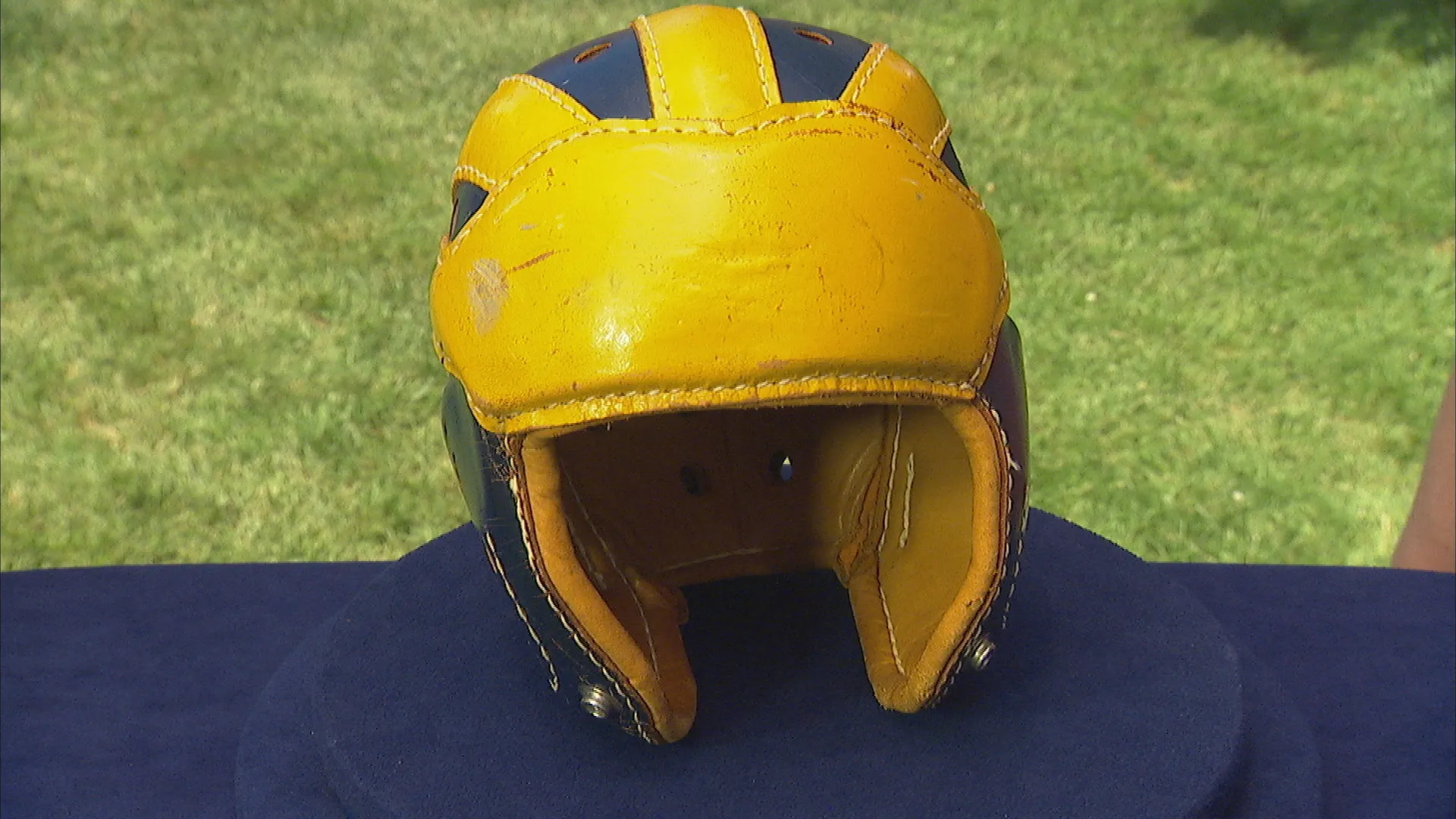
appraisal
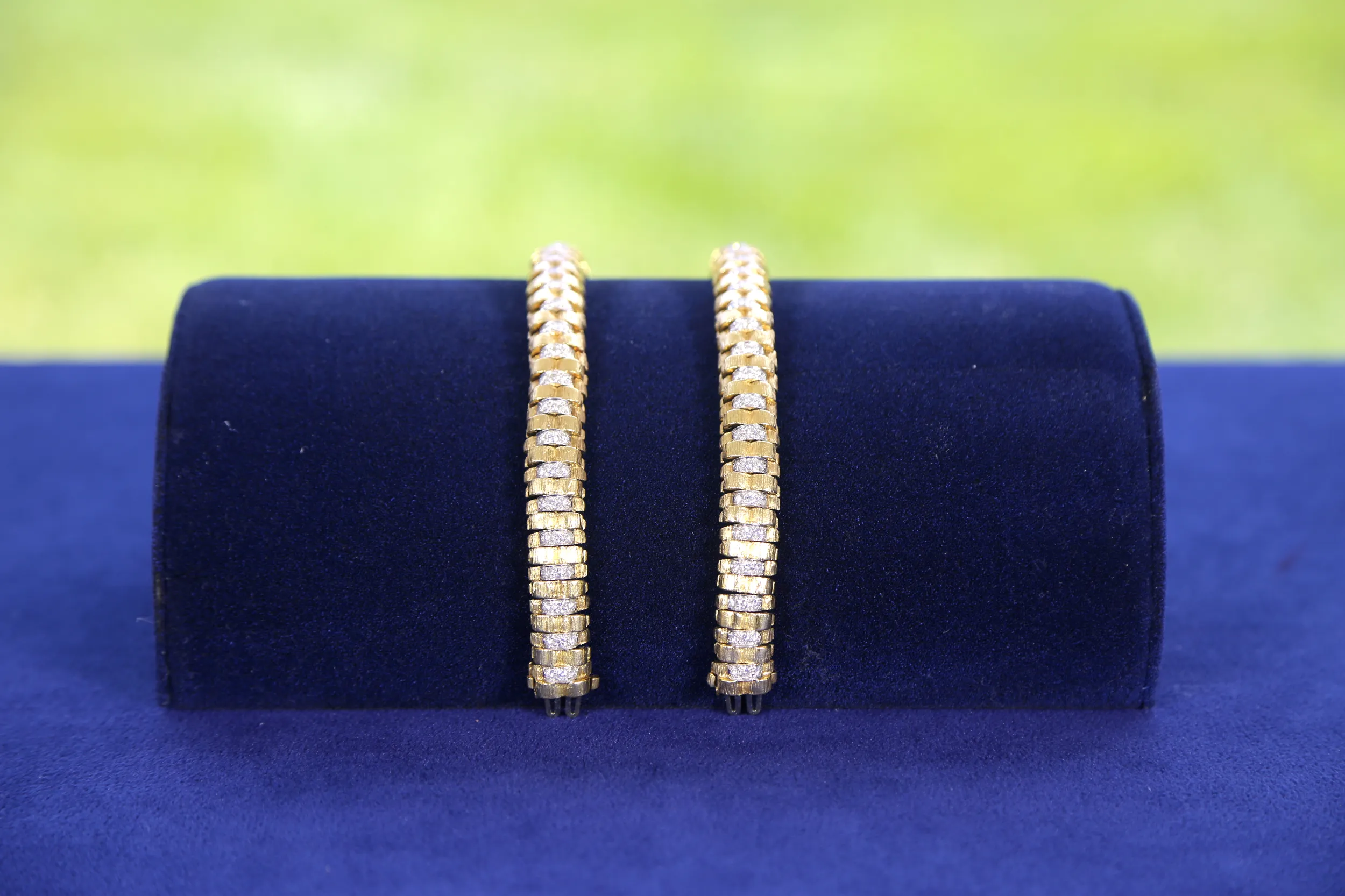
appraisal
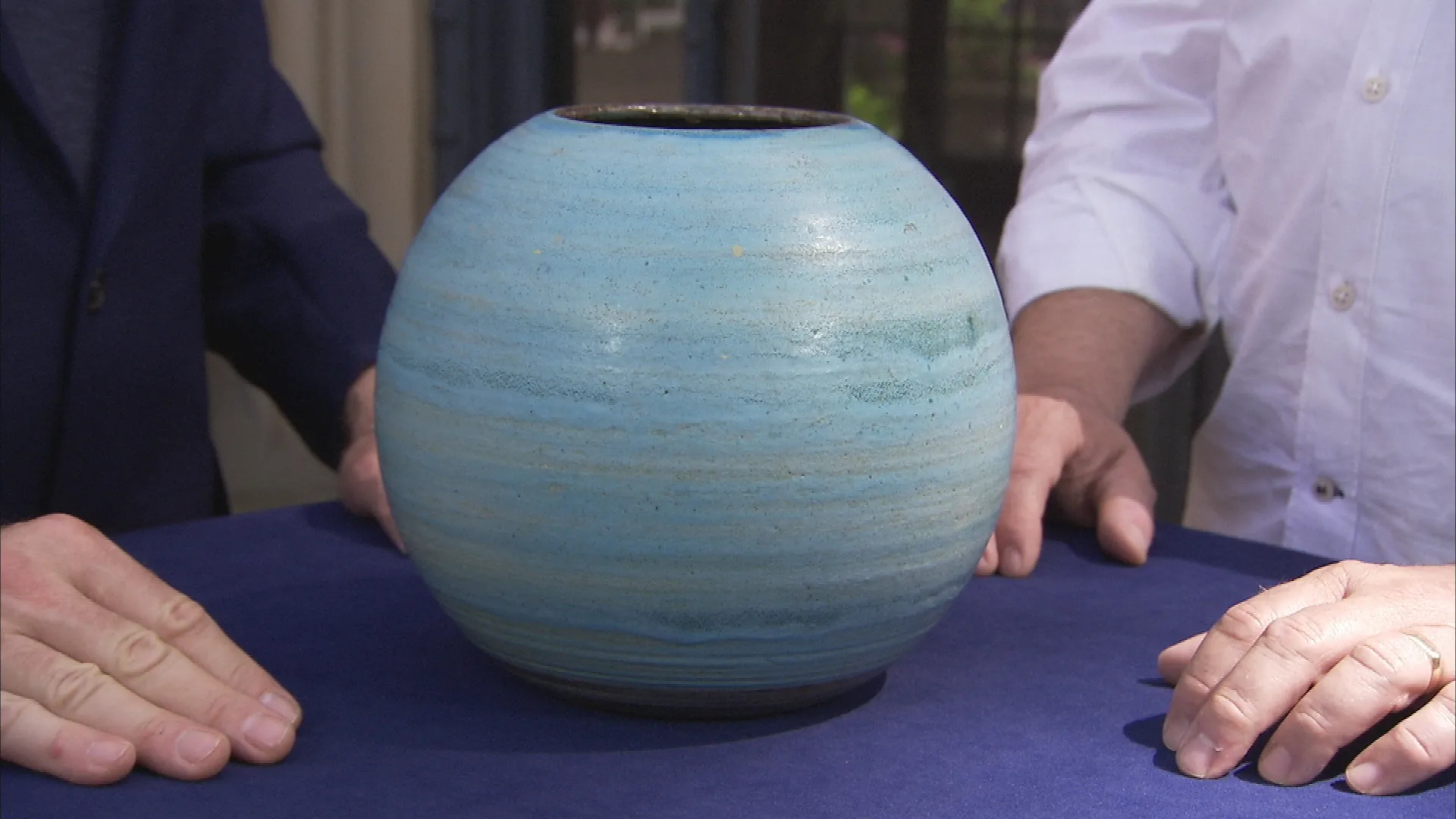
appraisal
appraisal
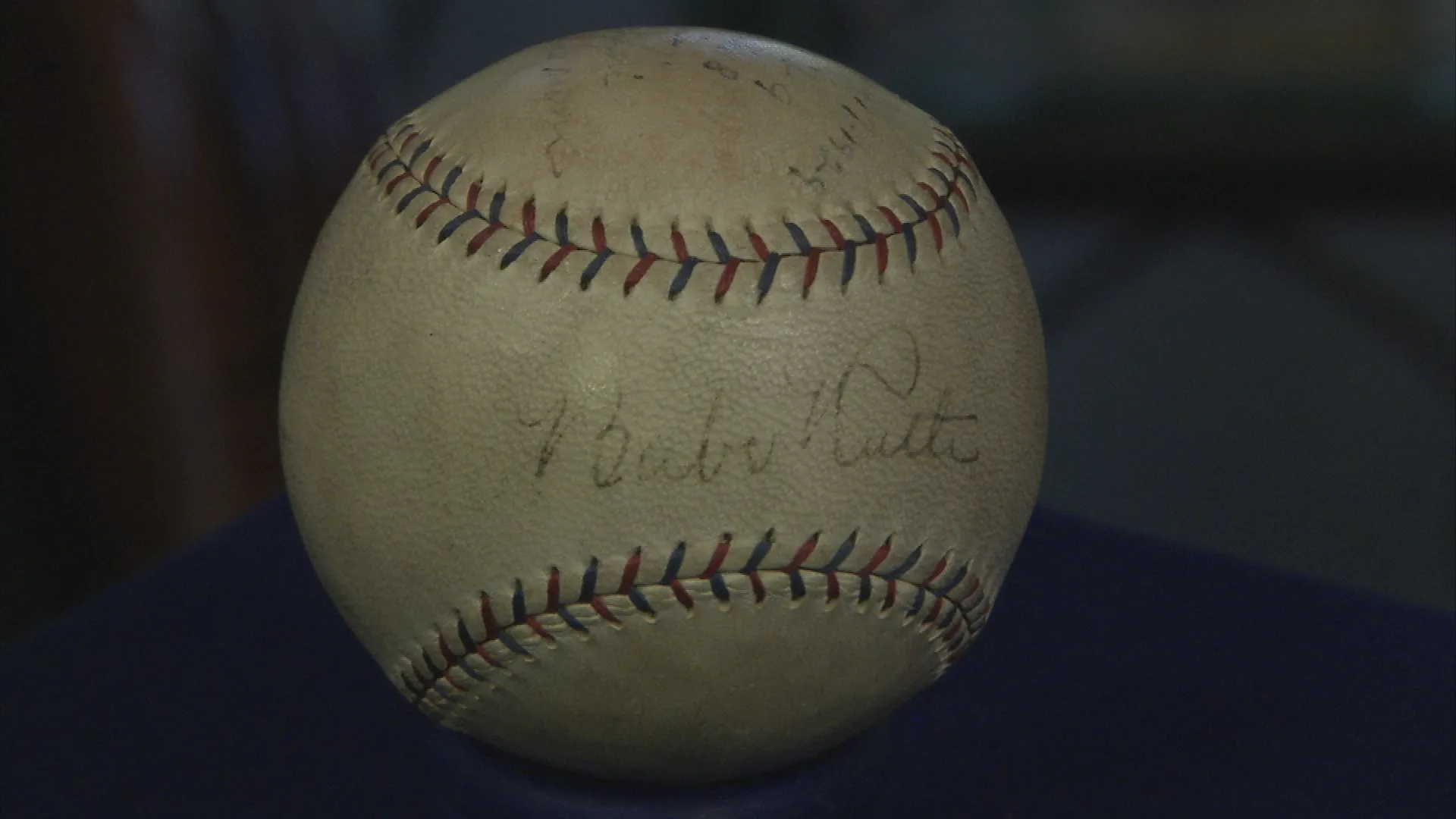
appraisal
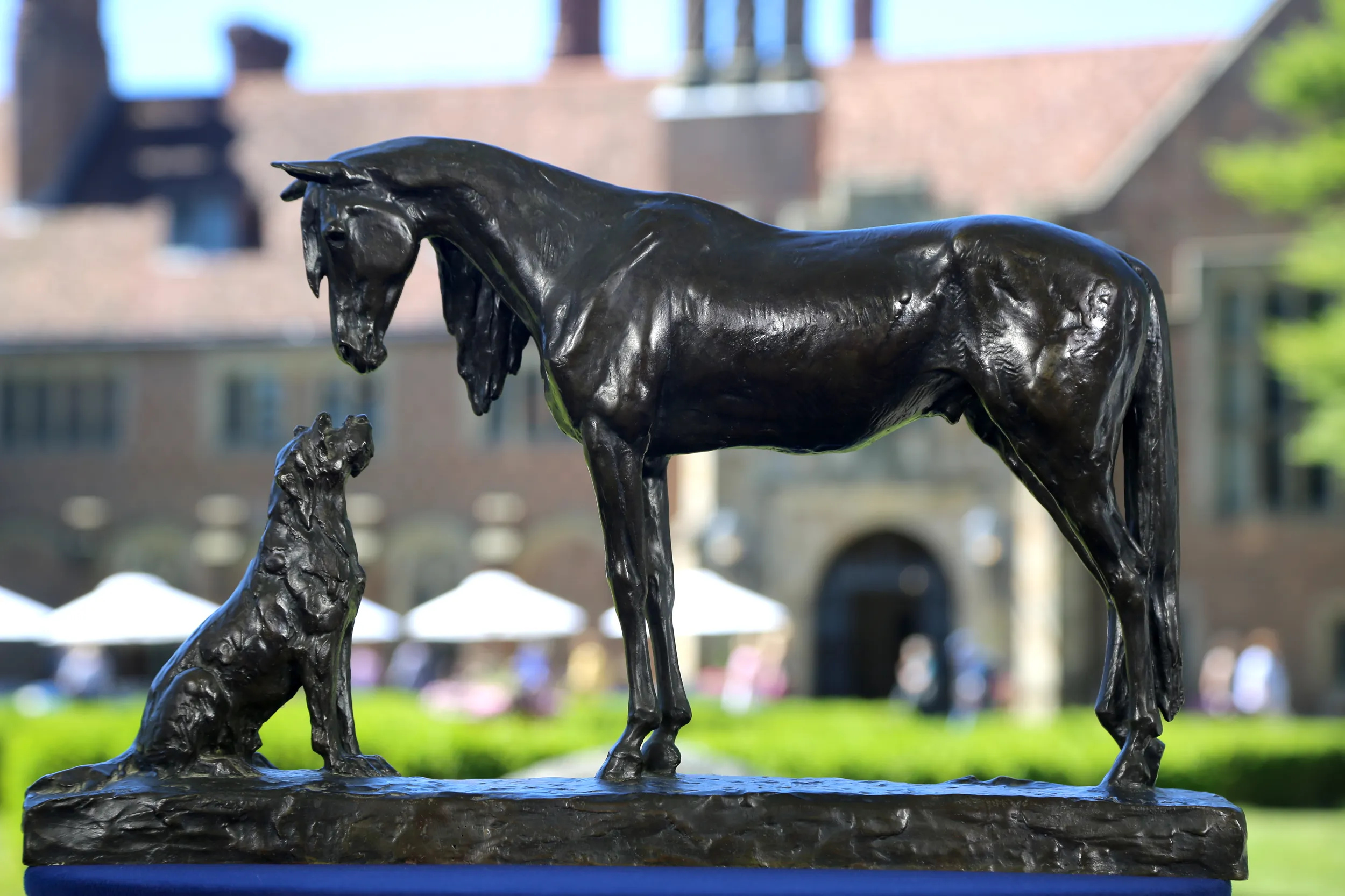
appraisal
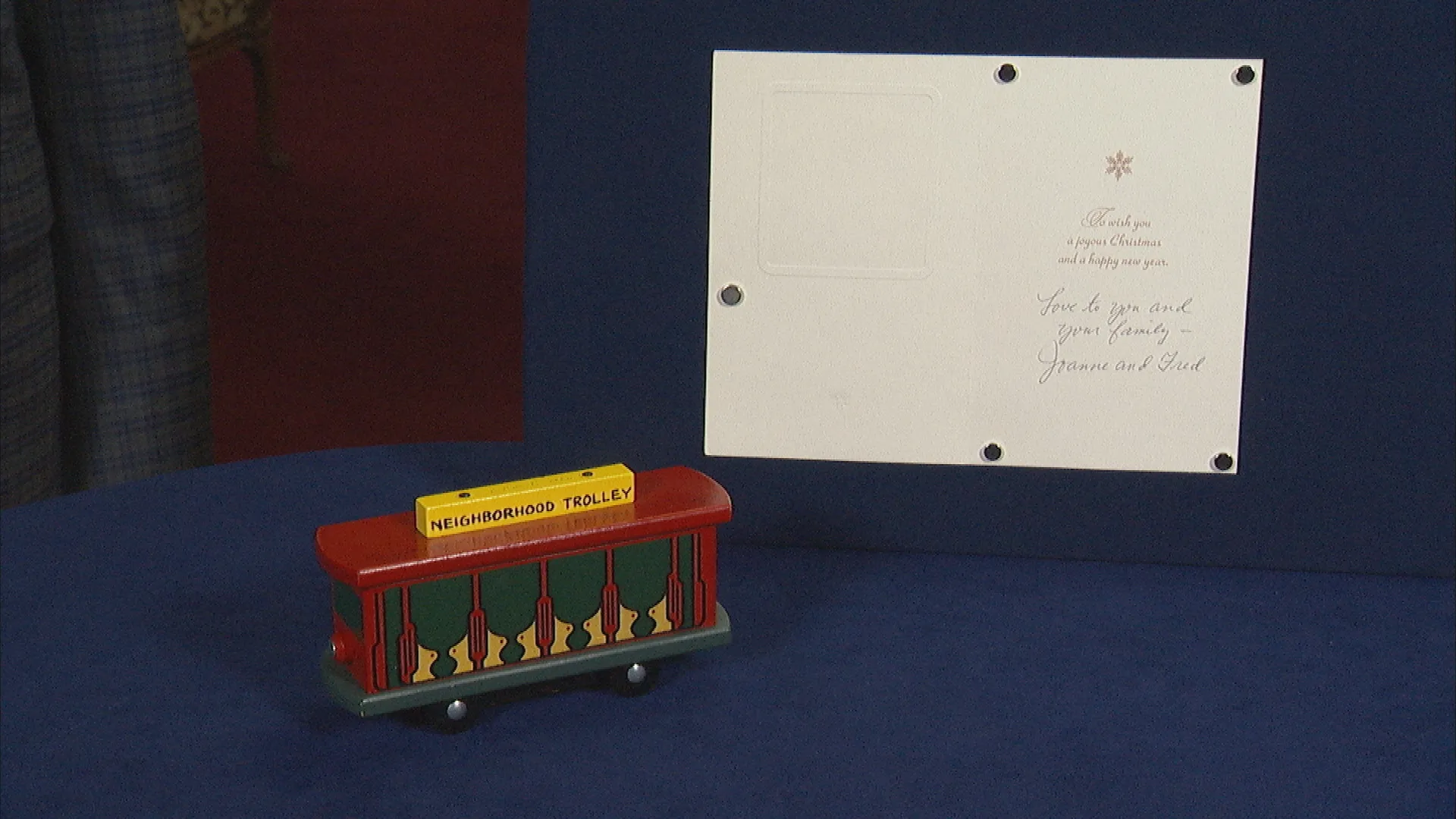
appraisal
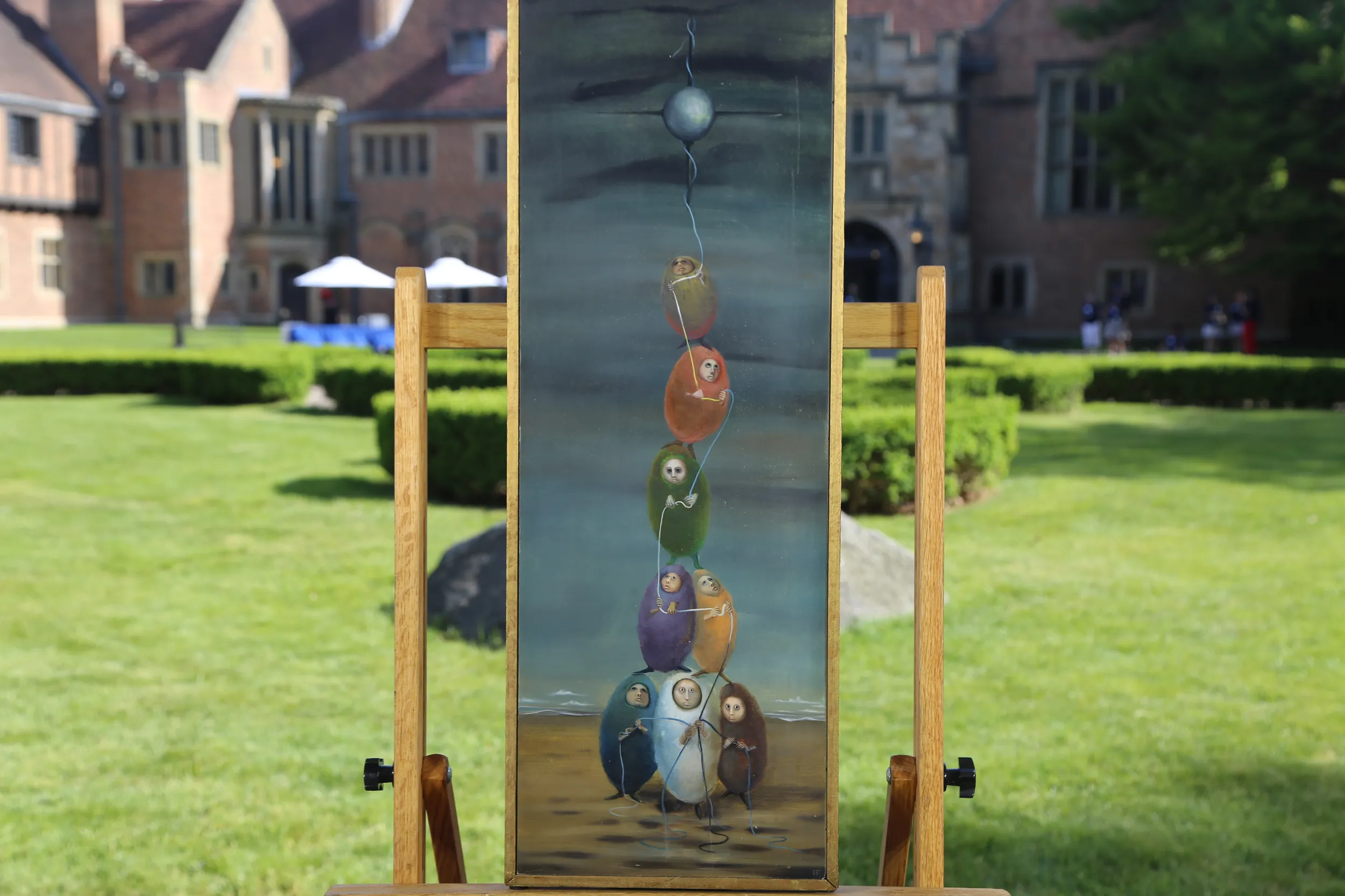
appraisal
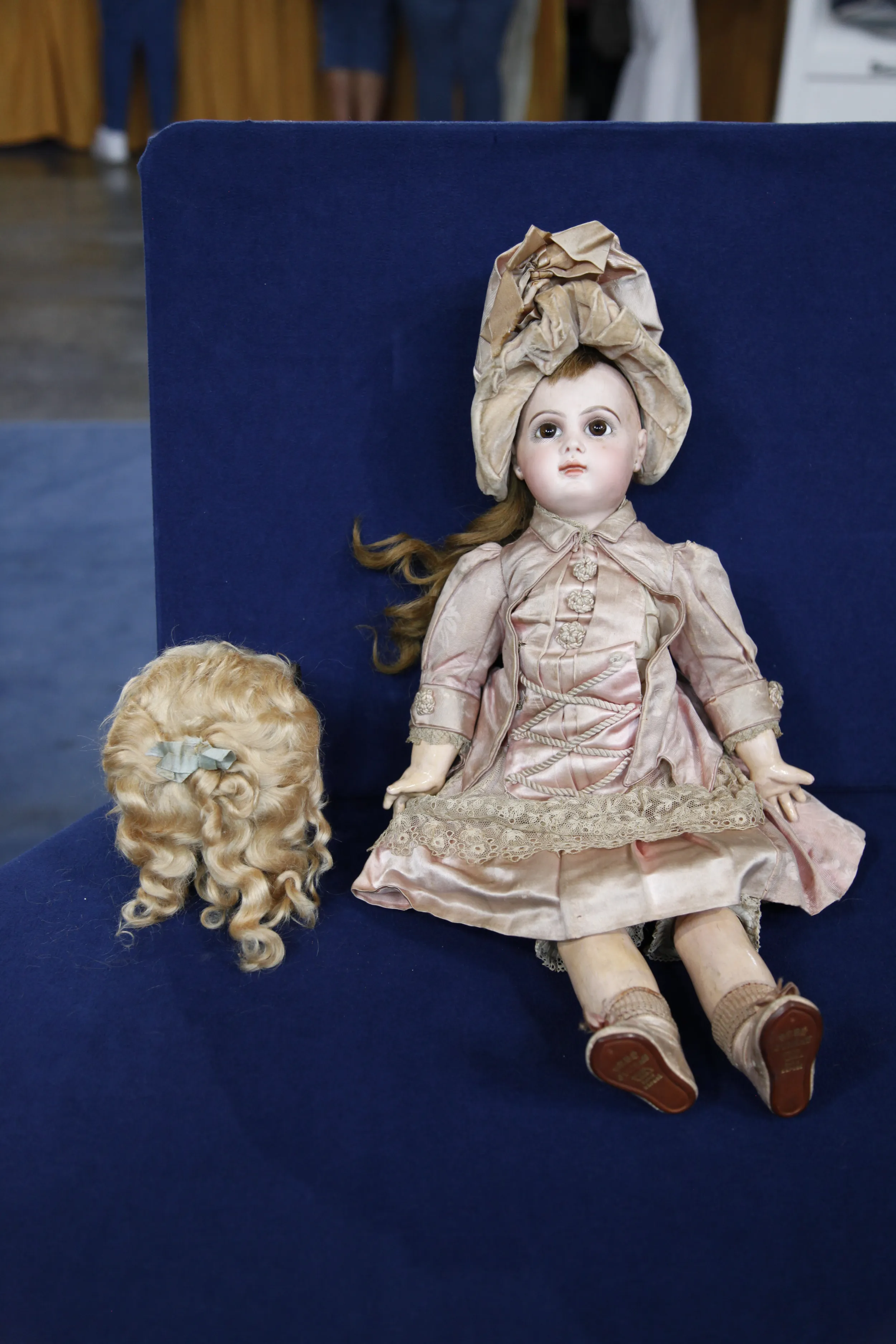
appraisal
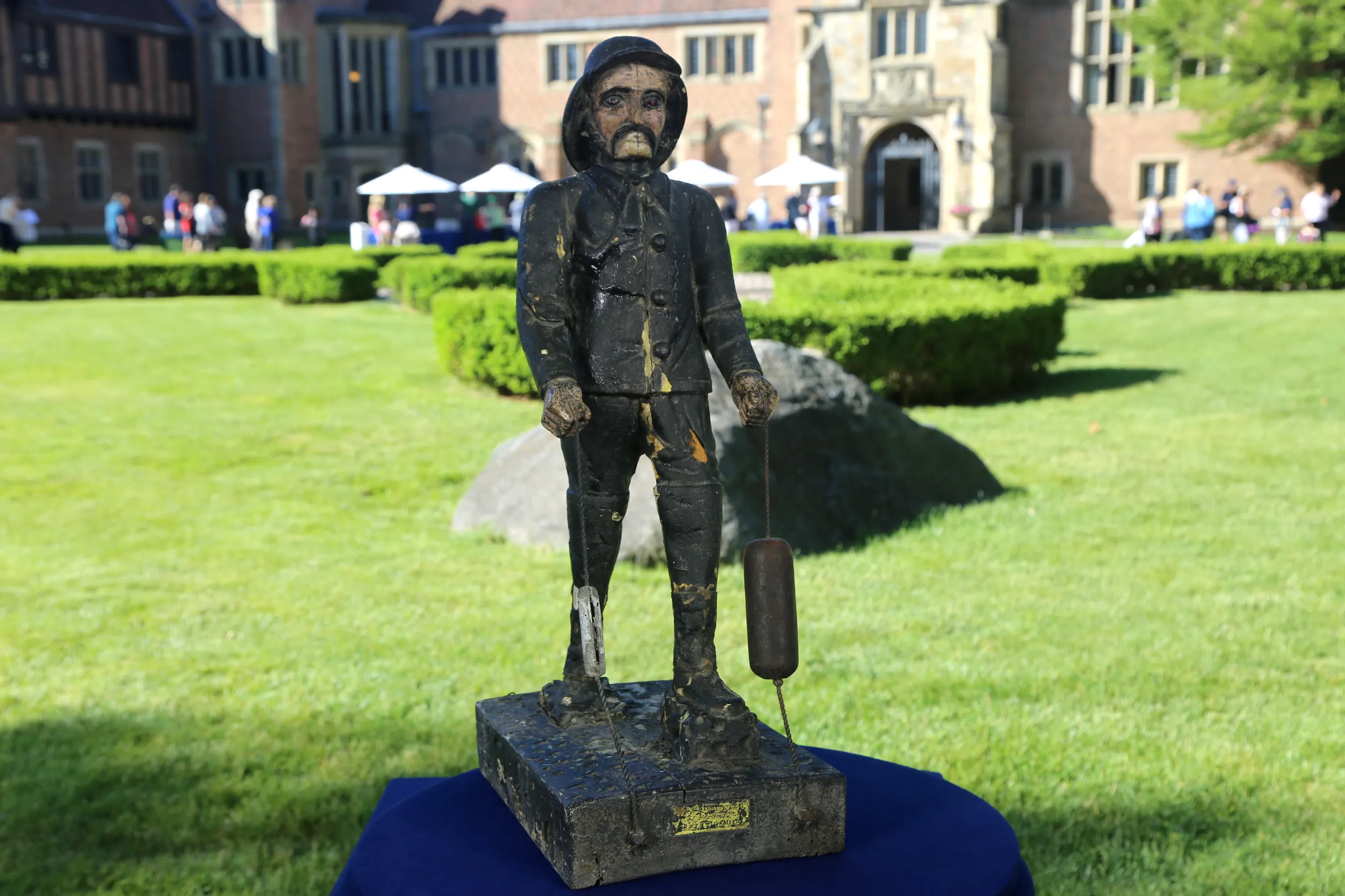
appraisal
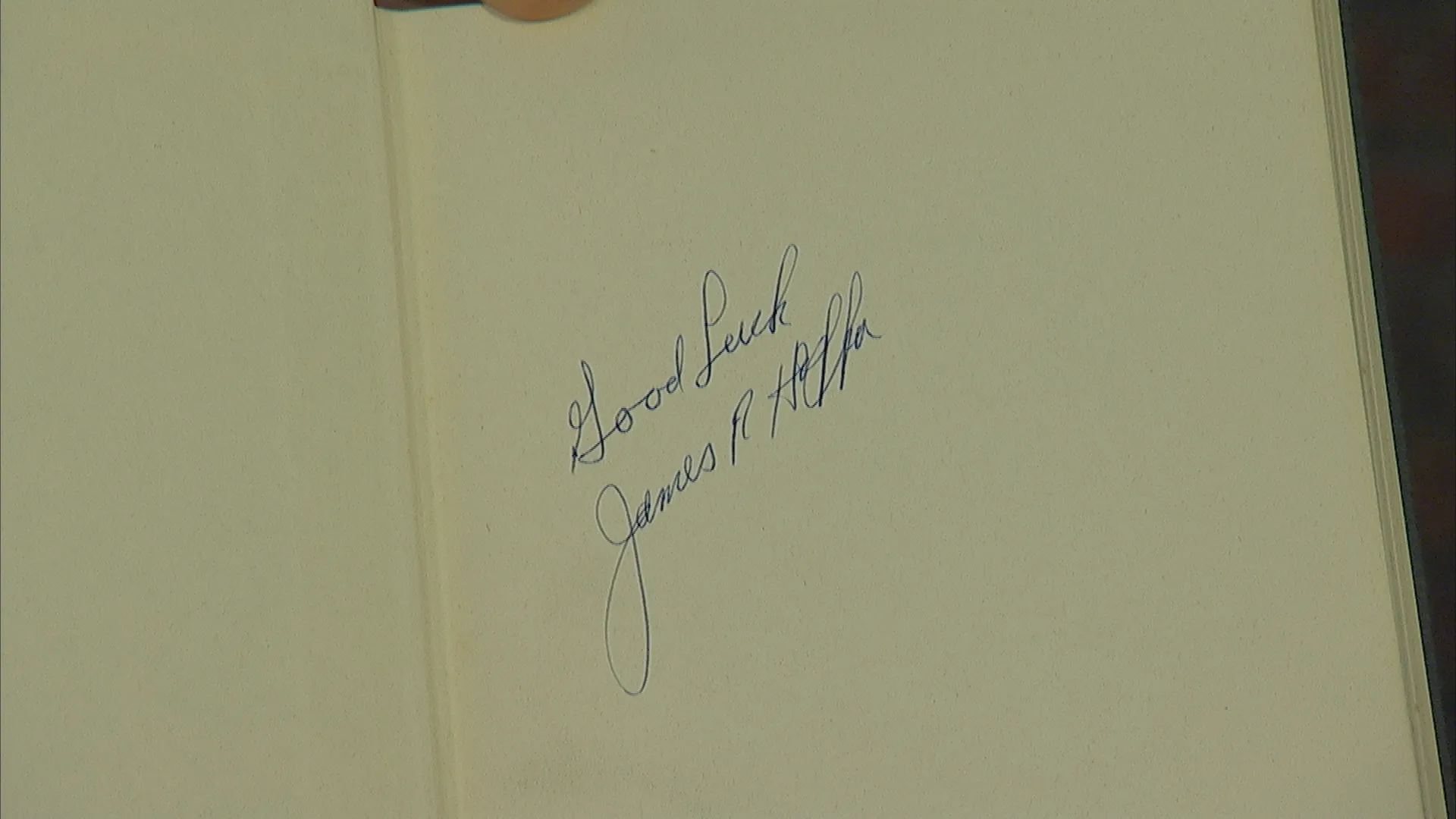
appraisal

appraisal
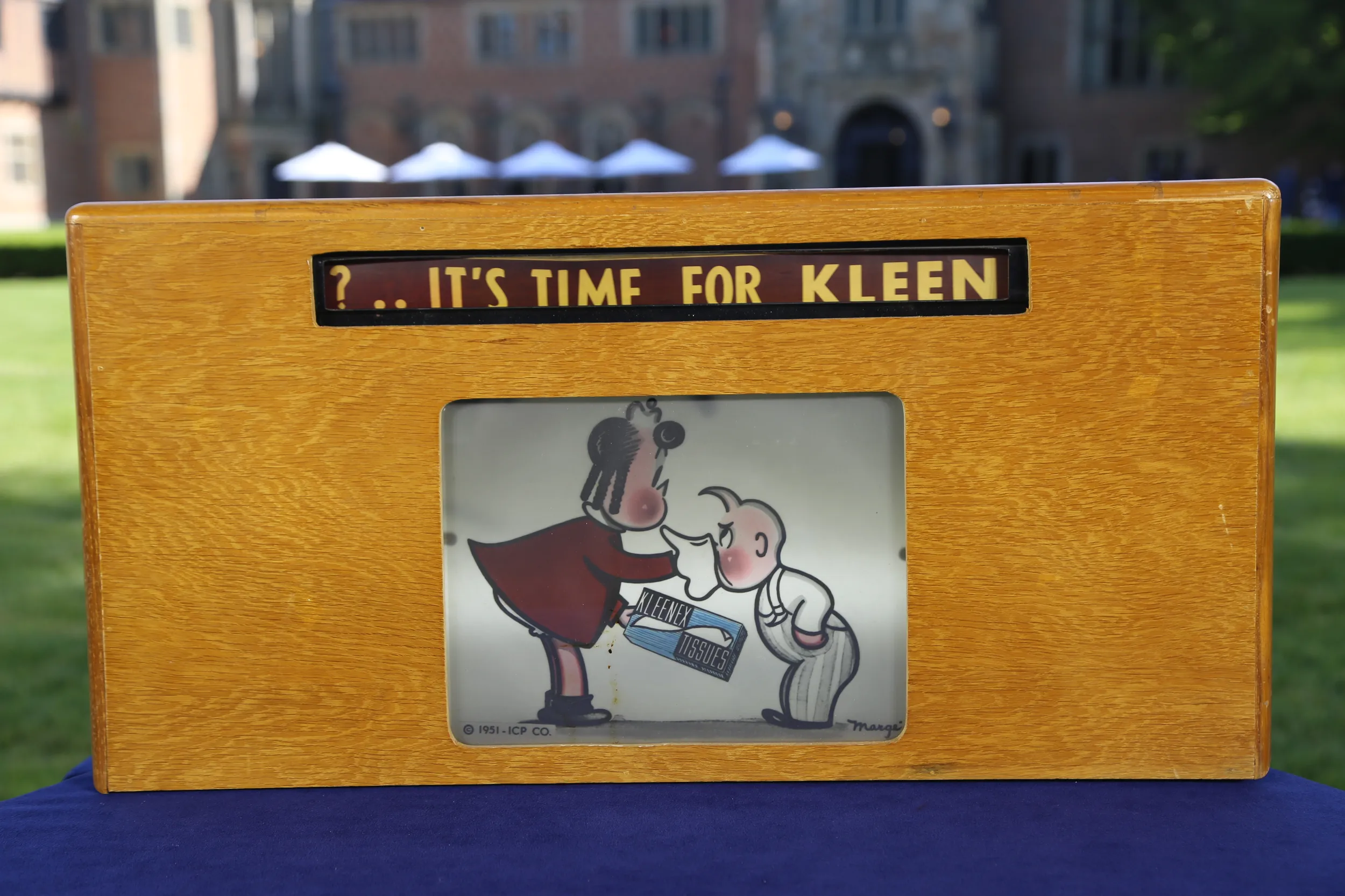
appraisal

appraisal
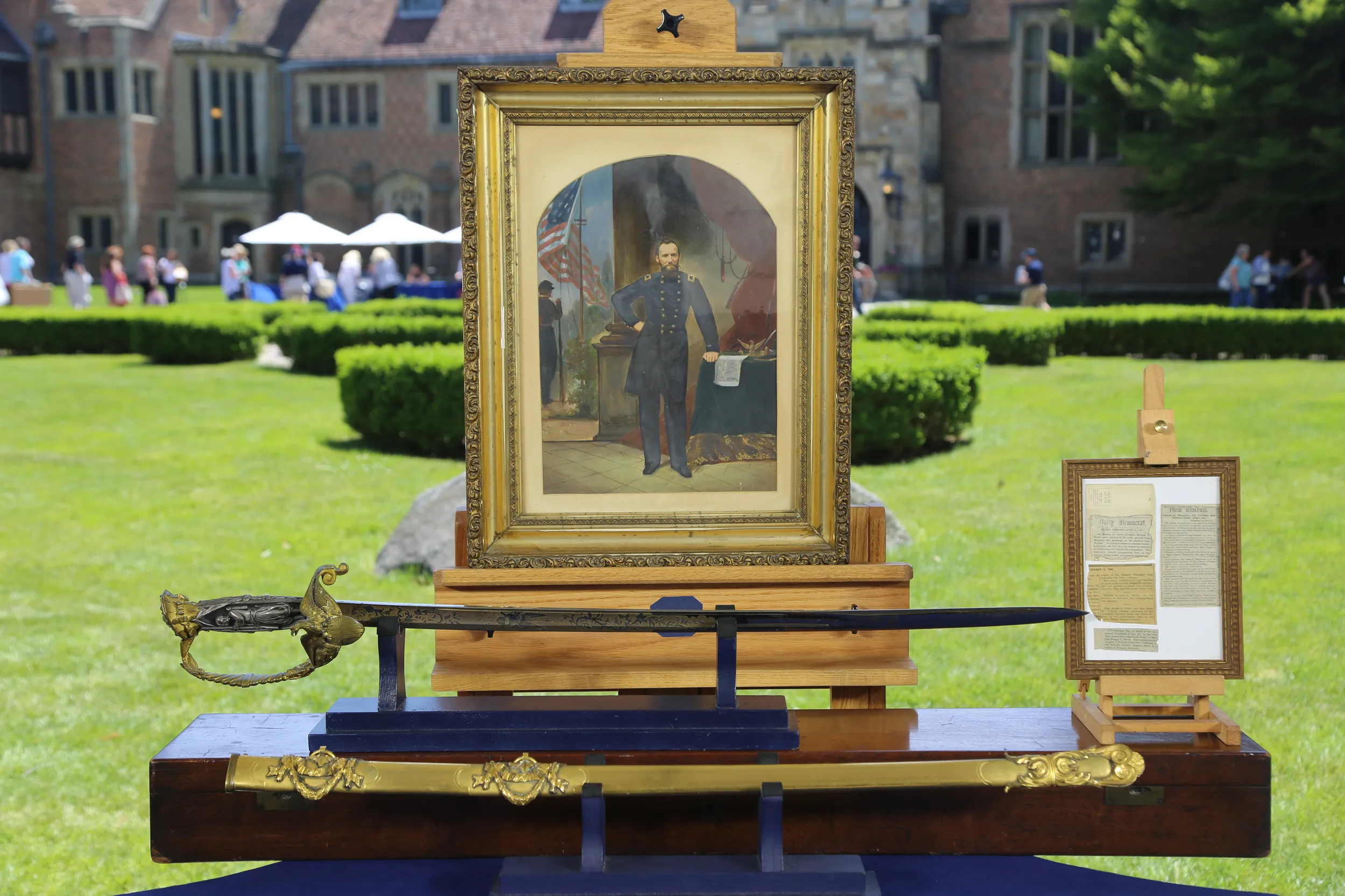
appraisal














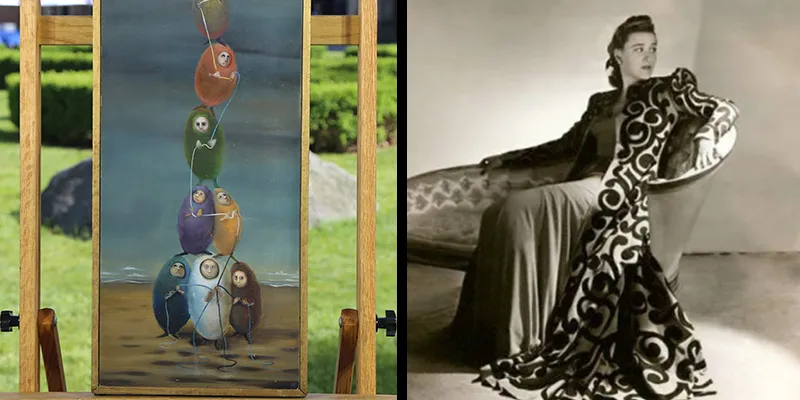
Tichenor was a model, fashion editor, and surrealist artist who seemed to live "13 lifetimes in her lifetime." See and find out more!
A weekly collection of previews, videos, articles, interviews, and more!
Funding for ANTIQUES ROADSHOW is provided by Ancestry and American Cruise Lines. Additional funding is provided by public television viewers.
ANTIQUES ROADSHOW is a trademark of the BBC and is produced for PBS by GBH under license from BBC, Worldwide. PBS is a 501(c)(3) not-for-profit organization.
A weekly collection of previews, videos, articles, interviews, and more!
Test your appraisal knowledge in ROADSHOW's new game — Price Range!

